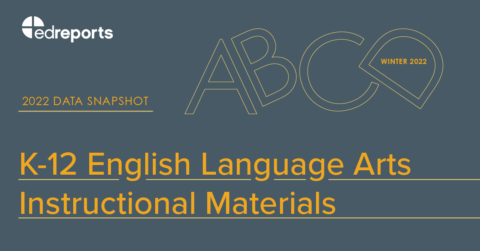How to Select a High-Quality K–5 ELA Curriculum
Seek out K–5 ELA materials that empower teachers to help every student succeed in elementary ELA, plus a guide to early literacy curriculum formats.
Related Resources
how-to
Launch and Implementation Planning for Your Adoption Process
Getting high-quality materials into classrooms is just the first step toward improving student learning. This is why considering how you will launch and implement new materials is a critical aspect of your adoption process.
article
Foundational Skills Materials: Should I Supplement?
Read more about why EdReports is reviewing supplemental foundational skills materials and what to consider when choosing a program for your local context.
article
Data Snapshot: K-12 English Language Arts Instructional Materials
Learn more about the availability and use of high quality K-12 ELA curriculum in this new report.


